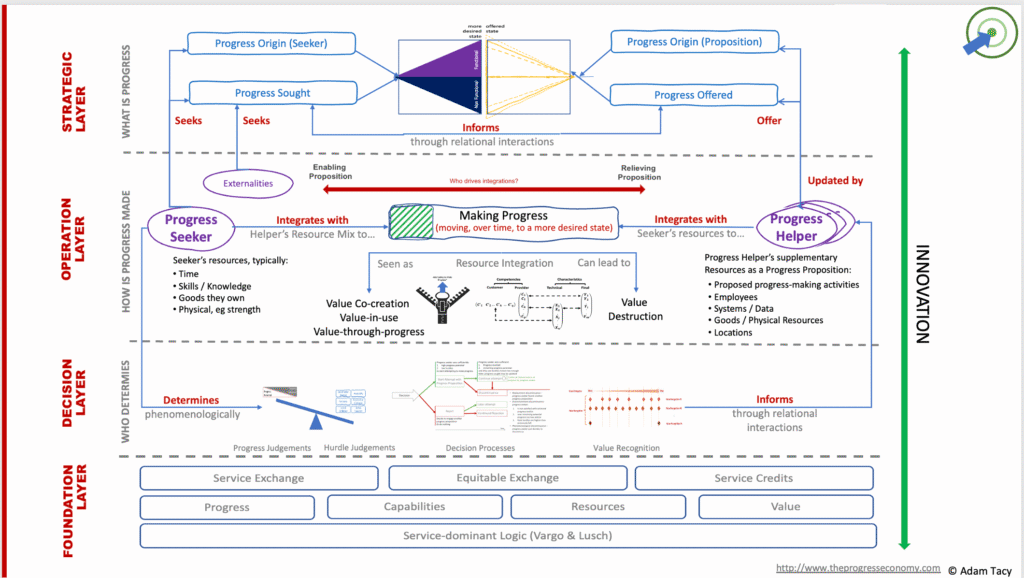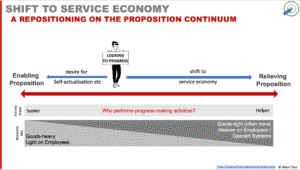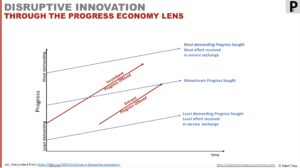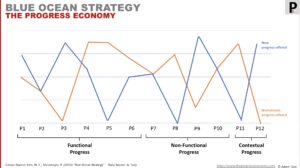
redefine your business
forget chasing value.
discover how progress transforms how you sell, innovate and grow
progress » progress attempts » progress hurdles » progress propositions » progress comparisons (value)
Beyond Value Podcast Episode:
» Stop asking “how do I add value?”
»Start asking: “how do I enable better progress?”
The Problem
» Innovation isn’t delivering
» Growth is stalling
Only 6% of executives are satisfied with their innovation initiatives
McKinsey
» you’re investing in innovation…but are you just performing innovation theatre?
» your teams are out there selling…but you’re missing growth expectations?
» something’s wrong…
The world is facing a decade of stagnation — the “Tepid 20s”.
International Monetary Fund
The Shift
» From chasing value
» To enabling progress
few suppliers…are able to answer…how you define and measure value?
Anderson and Narus
» but we don’t really want ‘value’…we want to get to more desirable states
» our perception of value emerges from a set of progress comparisons
» it’s time for a more insightful lens: enabling progress
Progress: moving, over time, to a more desired state
The Progress Economy
» progress: deceptively simple; deeply powerful
Learning a language, getting nourished, searching faster, getting fit, moving to another location, hanging up a picture, breaking cryptography,… understanding how a Progress Seeker (you and I) wants to get from where they are now to their more desired state, and what holds them back, gives us powerful insights into sales and innovation.
» executive implications
CEO
align your organisation’s vision, purpose and narrative around enabling (better) functional, non-functional and contextual progress rather than producing outputs
➠ push closer to what customers really want: reaching their progress sought, with six lowest progress hurdles and quickest progress recognition
improve your organisations capability to identify customers’ progress sought and progress origins; transition messaging from product benefits to the progress your organisation helps make
➠ helping reach progress sought = max value for customers; but that progress sought (and starting progress origin) constantly evolve: innovate or die
CMO
CInO
organise innovation and R&D around i) helping customers make better progress and existing progress better, ii) reducing one or more of the 6 progress hurdles and iii) accelerating their progress recognition schedule (that they interpret as a view on value)
➠ apply the progress levers to move innovation/product design from a game of chance to systematic success
design operations to deliver and adapt propositions that meet constantly evolving customer origins and progress sought
➠ implement a Progress Owner role – a supercharged product owner, responsible for i) understanding customers’ evolving progress origin/sought, ii) improving customers’ progress (innovation), and iii) executing progress proposition(s) (execution)
COO
CFO
reframe investment around cost-to-enable-improved-progress and maximising service exchange – size * number – though often through service credits (typically in the form of money)
➠ open the door to business model innovation
» progress is…

» a framework
for a deeper, more insightful, view into what seekers are trying to do and their challenges
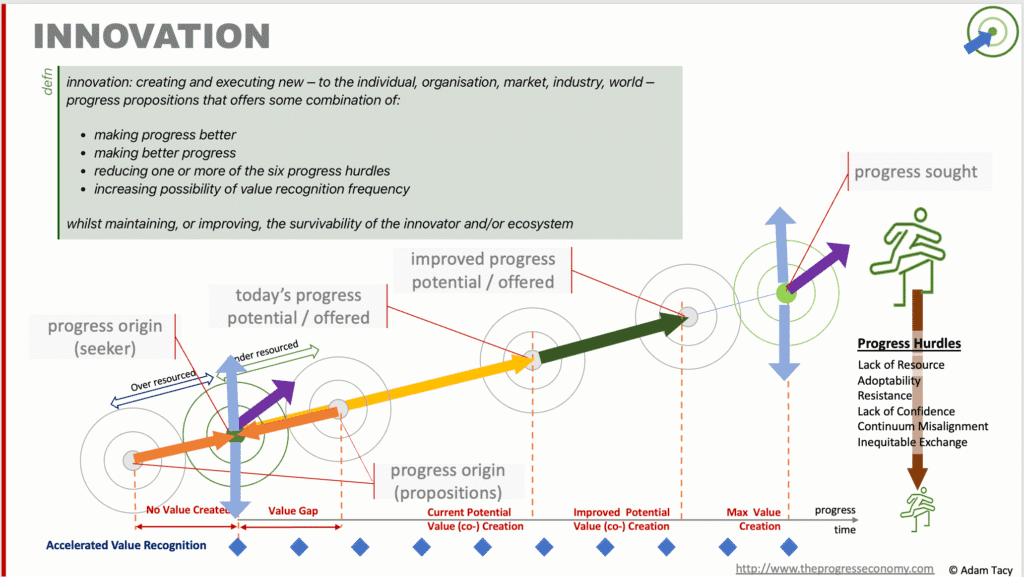
» a toolkit
a set of tools for driving innovation and sales success
…that powerfully explains innovation and sales
Progress:
» moving, over time, to a more desired state
Innovation:
» making progress better
» making better progress
Sales:
» aligning for best progress
» may result in local innovation
… apply progress levers ➠improve innovation, sales, growth
» case studies
Shift to the Service Economy
The shift to a service economy isn’t just economic, it’s strategic. Here we find those levers. The Progress Economy reframes this change as Seekers positioning themselves towards relieving end of proposition continuum. Though some seekers… …more »
Leveraging Artificial Intelligence
Where does Artificial Intelligence fit in the progress economy? Generally it’s part of the proposition resource mix. …more »
Disruptive Innovation
Explore how disruptive innovation is seen through the progress economy lens …more »
Blue Ocean Strategy
Leveraging Blue Ocean Canvas to explore functional, non-functional and contextual progress and find blue oceans …more »

Next Steps..
Check out the architecture
Start innovating, successfully
- Innovation Problem
- Innovation in the Progress Economy
- Progress levers
